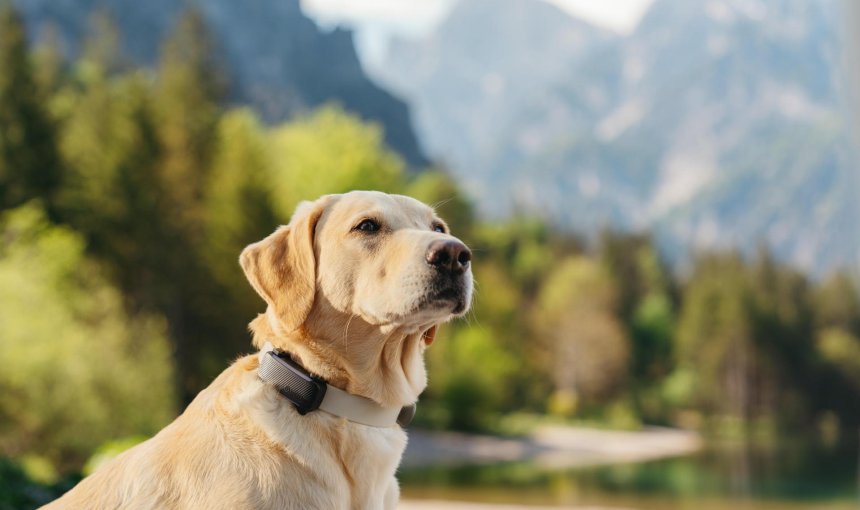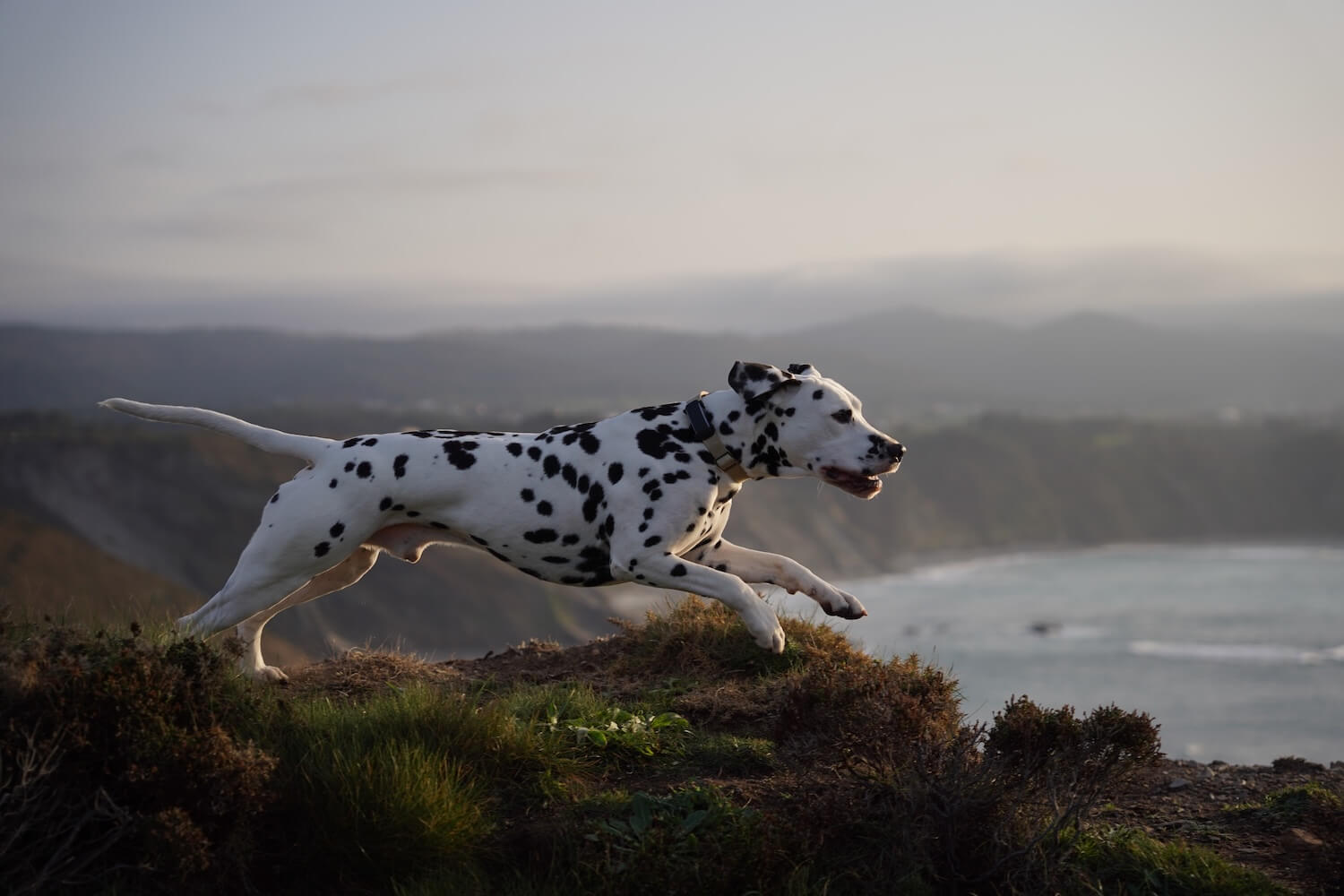Home Is Where The Bark Is: 10 Of The Best Family Dogs
Thinking of adopting one of these family dog breeds for your growing nest? Here are 10 of them - and how to best help them live their longest, happiest, healthiest life by your side.

Whether you’re living with older relatives or a house full of kids (or pets) – picking one from the best family dog breeds is always a good call. Here are 10 of the best dog breeds for families – and how you can help them live their best, happiest, longest life by your side.

Always know your buddy is healthy & safe
Read more10 of the best dog breeds for families – and how to care for them
1. English Sheepdogs
Originally bred as a shepherd dog in the UK, these big, fluffy dogs have thick coats that helped them brave the weather. (And also some nasty wolf bites or two.) As a result, Bobtails do tend to have their protective instincts. So you and your family will be well-guarded with one bossing you around. They’re highly loyal, energetic, and playful well into their senior dog years. (Making them a perfect playmate for a house full of kids.)
⚠️ Left to their own devices, your Bobtail’s herding instincts might lead them to explore your neighborhood in search of a flock of sheep or a herd of cattle to gather around. So make sure to keep them occupied with tons of playtime and outdoor activities.
2. Bichon Frisés
If you’re looking for one of the best small dogs for kids, look no further than the Bichon Frisé. These clever, curious, highly athletic little dogs are as comfortable curling up on the couch as they are at agility competitions. Don’t be alarmed by that voluminous curly coat, though! Bichon Frisés don’t have undercoats – which means they’re more likely to give your vacuum cleaner a breather than other long-haired dog breeds.
⚠️ Your Bichon Frisé may be a bit prone to separation anxiety. You’ll find it helpful keeping them occupied when you’re out working or traveling. (Either with a ton of toys, food puzzles, or another pet or person to keep them company.)
3. Newfoundlands
This big cuddly teddy bear tends to be quite gentle with kids and older adults. Originating from Canada, Newfoundlands were used as working dogs in the past – pulling around carts and helping out in farms with their size and strength. Now as a family dog, they make for the perfect sweet-tempered babysitters that aren’t bothered by unruly kids or busy family environments.
💡With their love for swimming and water-repellent coats, some Newfies around the world have emerged as water rescue heroes. So if you’re taking yours along with you on vacation, do a quick search for any ponds, rivers, lakes, or water bodies nearby. Your Newfie might wander off to explore them for a splash!
4. Poodles
Think Poodles are way too high maintenance for a family? Turns out, they’re one of the most docile, intelligent, and highly athletic dog breeds. These beautiful dogs also take well to regular training and playtime. So don’t be surprised if you see them often at dog sports and agility competitions. And with their discipline, you can take them along on family outings of all kinds with zero stress.
5. Cocker Spaniels
Another one of the best dogs for kids is the Cocker Spaniel. This medium-sized family dog is cheerful, playful, and likely to keep you on your toes from its high energy! With their high intelligence, Cocker Spaniels take well to regular training – for both basic and advanced commands. Just make sure to invest in teaching them a good recall in case you’re considering letting them off leash.
⚠️ Because despite their cute and cuddly appearance, Cocker Spaniels were once trained as hunting dogs. Originally, they were bred to chase down fast-moving prey like wild birds. Which means yours is most likely to have their inborn hunting and chasing instincts intact. So they might chase after smaller pets, kids, or even fellow runners at the park when you’re both out together!
6. Dalmatians
With its beautifully spotted coat and highly affectionate nature, Dalmatians are another one of the best dog breeds for families. Originating from Croatia, they’re good-natured, sociable, heroic dogs that are the historical mascot of firefighters around the US. In fact, if you live on a farm (or near one), don’t be surprised if your Dalmatian ends up befriending the rest of the animals around – especially the horses!
Much like other family dog breeds, these spotted dogs tend to be highly energetic. Ideally, they have a yard to run around and play in. Dalmatians are also the perfect running, jogging, bikejoering, or hiking buddy for all your outdoor adventures. Here’s one wearing a Tractive GPS tracker for max safety:

7. Beagles
Another small- to medium-sized dog that’s great with kids are Beagles. In fact, they’re so sensitive and emotionally intelligent that they make excellent therapy dogs as well – so don’t be surprised if you see one on a visit at a hospital or senior care facility. Beagles are highly sociable and love being around people and children. They’re lively, energetic dogs that may have a bit of a stubborn streak. (They were bred as hunting dogs in the past, after all.) Your Beagle will be happiest roaming your backyard or accompanying you on walks and runs.
8. The Collie family
You might think of “Collies” as, well, the dog that plays Lassie – who’s actually a Rough Collie! Turns out, the Collie family includes Smooth Collies, Border Collies, Shelties, and a whole bunch of active, intelligent herding dog breeds that love nothing more than an open yard to run around. In fact, most members of the Collie family make for excellent family dogs – good-natured, uncomplicated, and comfortable being around kids. They’re also highly active and do best if adopted by a sporty family that enjoys regular hikes, walks, and runs in nature.
9. Bernese mountain dogs
Originating from Switzerland, Bernies were also used as farm dogs (much like Collies) – though mostly as draft animals, pulling carts around. They tend to be relaxed and good-natured, though a little slow to warm up around strangers. Bernies can also be quite protective, barking when they feel someone’s intruding on their “territory” or threatening their loved ones.
10. The Retriever family
And wrapping up with the classic family dog breeds – Labrador Retrievers. They’re famously gentle, sweet-tempered, and eager to please – making them perfect companions for families with younger kids. They also take well to regular training and playtime. Plus, with their emotional intelligence, they make excellent therapy and guide dogs as well.
And if you’ve liked this post, share it with a friend or a loved one – and let’s help build a safer, kinder world for our furry friends together.




